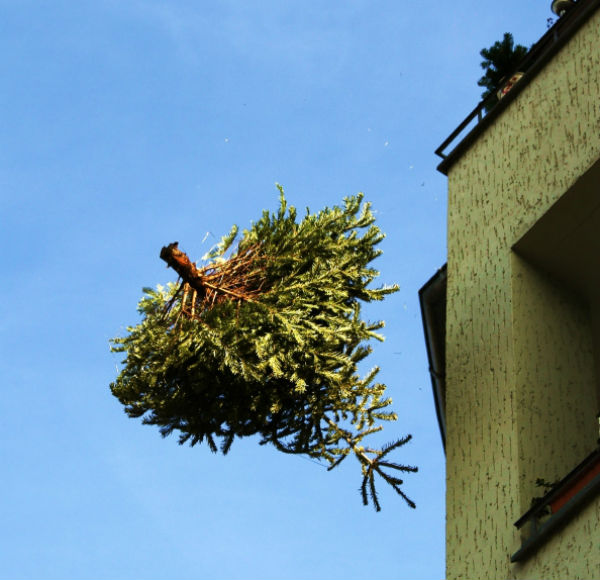Green lifestyle modifications are the name of the game here on 1-800-RECYCLING, and if you’re a regular reader, you know that the sky’s the limit in terms of making daily planet-friendly choices that have a smaller overall carbon footprint. But jeez, the holiday season is upon us. Surely, good green stewards deserve a little wiggle room when it comes to honoring specific festive traditions.
Take fresh-cut Christmas trees, for example. The eco-responsible consumer knows that the very best place to leave trees is in the ground, where they can generate oxygen while filtering carbon dioxide out of our atmosphere, especially in light of increasingly
escalating global temperatures.
Throughout America, however, 15,000 different farms encompassing a total of 350,000 acres grow nothing but assorted types of fir and pine trees specifically to meet the demand of holiday-minded consumers. This
thriving business cultivates and harvests approximately 25 to 30 million Christmas trees annually, taking anywhere from four to 15 years to bring a tree to fruition (depending on species and desired height).
Even the squeaky-greenest individuals still want to experience the sensory and visual delights of a real live (and alas, soon-to-be-dead) Christmas tree, and while municipal recycling programs typically accept dearly departed holiday relics in January, there are several other ways to do right by Mother Nature without having to resort to a chipper:
- Tame muscle aches with it: A well-known disinfectant, pine (quite like eucalyptus), is able to alleviate the discomfort accompanying painful joints and overworked muscles when incorporated into a topical oil or bath.
- Sit on it: The Christmas Tree Project reincarnates discarded trees into stools, transforming trunks and branches as the seat and legs of rustic-looking stools.
- Donate it: Transforming trees into landscaping mulch is pretty practical, but even more remarkable is giving your holiday tree to an organization that sinks it into the ocean as a fish habitat, uses it to facilitate marsh restoration and/or prevent soil erosion or offers it up to zoo residents as a tasty snack.
- Drink it: Ever considered brewing pine needle tea? Or, if you fancy something a lot stronger, homemade spruce beer or a pine needle daiquiri?
- Razzle-dazzle wildlife with it: Those who want instant gratification can simply plunk their no-longer-desired Christmas tree against a fence or property corner and adorn it with wintery, critter-friendly sustenance such as peanut butter seed balls, suet cakes, dried fruit, etc. If you fancy yourself a DIYer, then make an effort to strip the entire tree, leaving the main boughs and trunk intact for a far more permanent bird and wildlife feeding center. Earn extra brownie points by artfully trimming branches, adding personalized decorative touches and even sealing the whole thing with weatherproof varnish so it stands the test of time.
- Eat it: The high vitamin C and vitamin A content of pine needles makes it a wholesome candidate for salad dressing infusions like this vinegar recipe, plus it adds unexpected panache to shortbread cookies and even salmon.
- Tone your skin with it: If swabbing your visage with a naturally astringent, chemical-free potion sounds kind of refreshing, push your factory-manufactured Sea Breeze aside and cook up a batch of this stimulating skin toner, stat!
- Decorate with it: Turn pine needles into sugared mealtime garnishes, Christmas ornaments, potpourri, spiral-shaped baskets or reincarnate the wood of a Christmas tree into beverage coasters, an early Valentine’s Day gift, a cat scratching post or a handy household plant hanger.
- Landscape with it: Christmas tree mulch is one thing, but you can easily kick it up a few additional notches by stripping flexible boughs of their needles and weaving them into earthy tomato cages, fences, decorative garden path edging or other types of natural plant supports.
